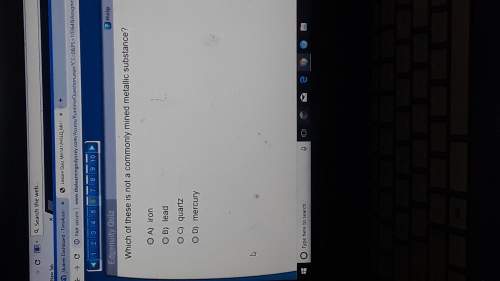
Chemistry, 15.10.2020 07:01, AngChell21
1.00 g of a compound is combusted in oxygen and found to give 3.14g of CO2 and 1.29 g of H2O. From these data we can tell thatA. the compound contains C, H, and some other element of unknownidentity, so we can’t calculate the empirical formula. B. the compound contains only C and H and has the empirical formulaof C6H. C. the compound contains C, H, and O and has the empirical formulaof CH3O. D. the compound contains only C and H and has the empirical formulaof CH2.E. None of the above is a true statement

Answers: 2
Other questions on the subject: Chemistry

Chemistry, 22.06.2019 12:00, luffybunny
There is one girl i like and i don't know how to tell her that, i have a feeling she knows but if she doesn't i don't want to make a fool out of myself how is one way to boost my confidence on asking her out
Answers: 1



Chemistry, 23.06.2019 01:00, MrTeriffic
Imagine if during the cathode ray experiment, the size of the particles of the ray was the same as the size of the atom forming the cathode. which other model or scientific observation would have also been supported? 1. this would support dalton's postulates that proposed the atoms are indivisible because no small particles are involved. 2. this would support bohr's prediction about electrons moving in orbits having specific energy. 3. this would support bohr's prediction about electrons being randomly scattered around the nucleus in the atom. 4. this would support dalton's postulates that proposed that atoms combine in fixed whole number ratios to form compounds.
Answers: 1
Do you know the correct answer?
1.00 g of a compound is combusted in oxygen and found to give 3.14g of CO2 and 1.29 g of H2O. From t...
Questions in other subjects:

Biology, 25.01.2021 18:00

Chemistry, 25.01.2021 18:00



Social Studies, 25.01.2021 18:00


Mathematics, 25.01.2021 18:00



Chemistry, 25.01.2021 18:00







